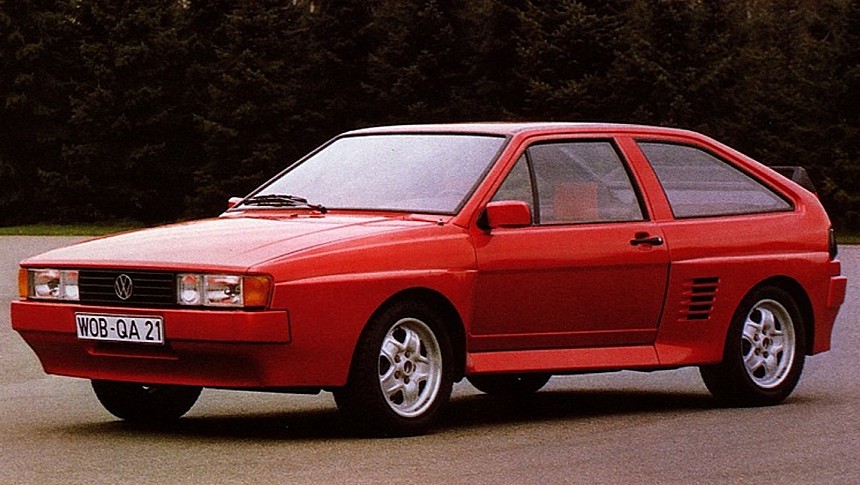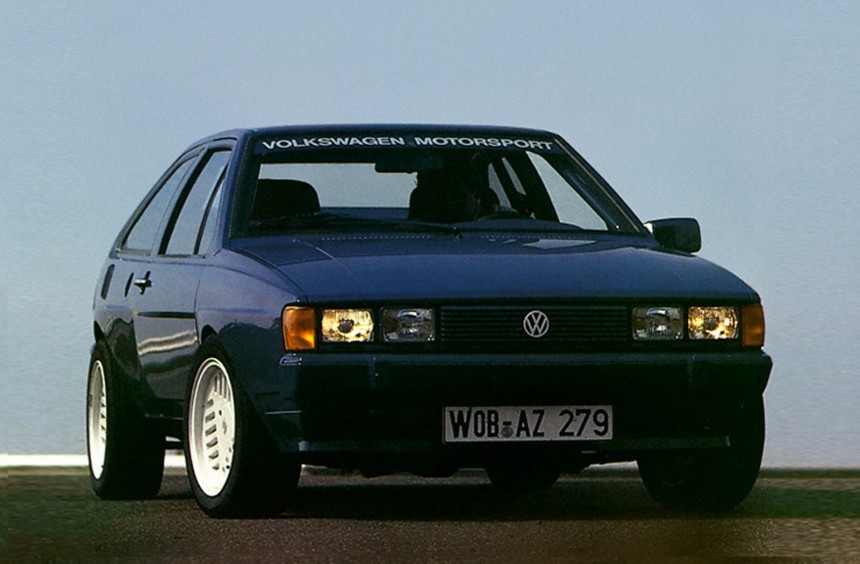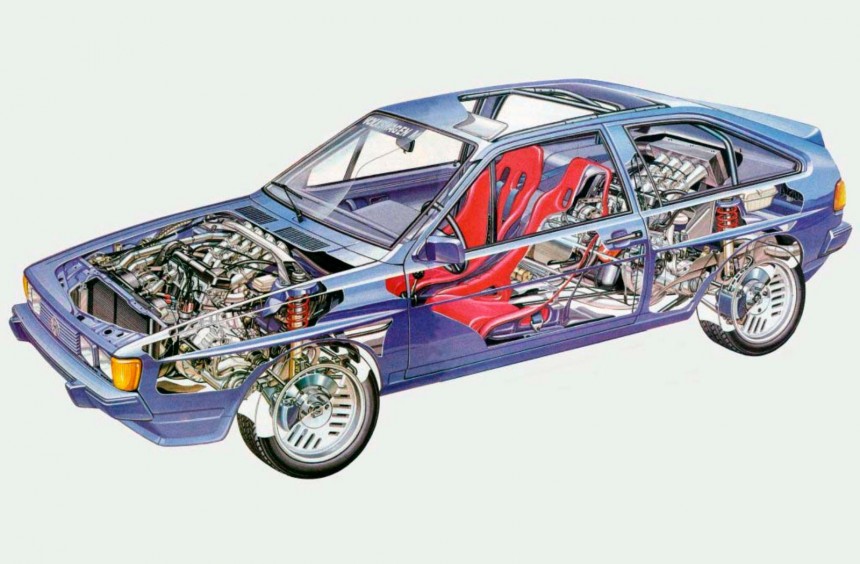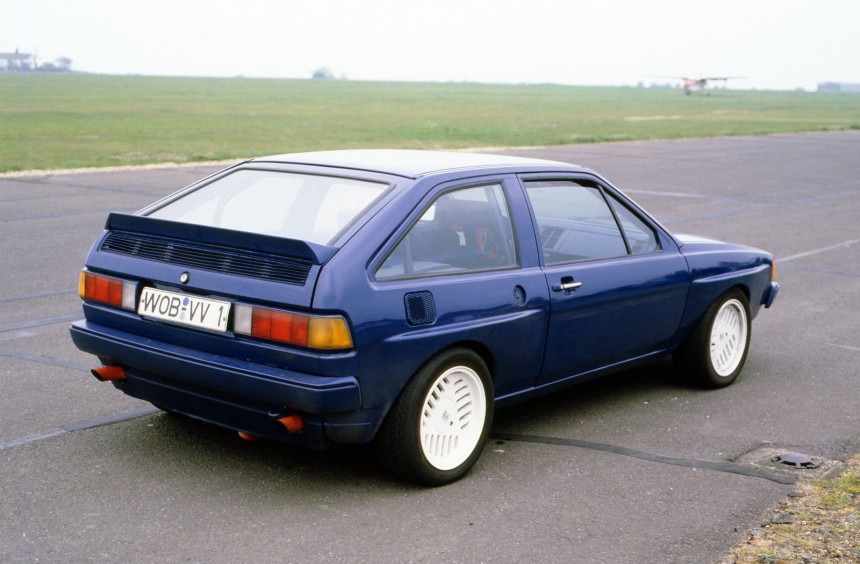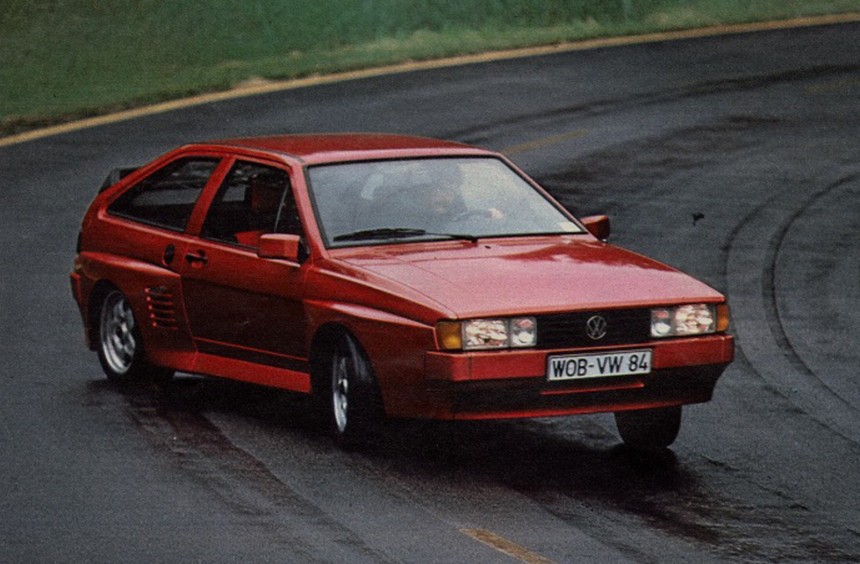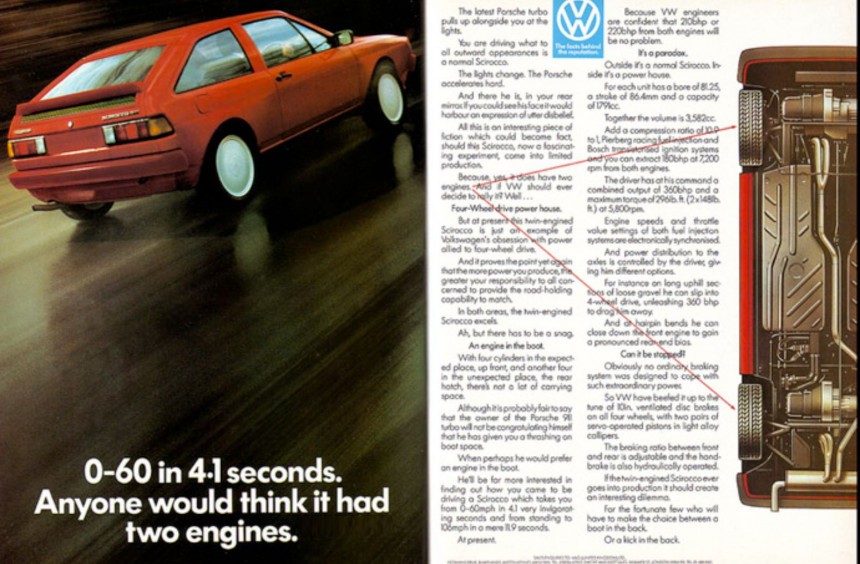More or less a Volkswagen Motorsport side project for a Group B rally car, the Scirocco Bi-Motor didn't make it past the prototype stage. However, it was close to being approved, meaning a street-legal homologation special could have been unleashed on public roads.
The 1980s was a wild decade for the automotive industry. The most popular motorsport competitions were getting increasingly permissive with their homologation rules, leading to some monstrous race cars. This allowed multiple innovations like turbocharging to thrive and trickle down to production models.
Besides turbocharging, four-wheel-drive revolutionized the World Rally Championship (WRC) during the 1980s thanks to Audi's innovative Quattro.
But, while Volkswagen's Audi and Porsche were making waves in motorsport, the German automotive group also flirted with the idea of boosting the VW brand's popularity by entering a factory team in WRC.
Following in the footsteps of Fiat, another European brand that wanted to shake the econocar image by entering the Abarth-prepped 131 in the world's premier rally competition (and eventually dominating it), VW Motorsport boss Klaus-Peter Rosorius kicked off an insane project centered around the second-gen Scirocco in the early 1980s.
Since the VW Group's management was skeptical and unwilling to fund a project that would compete directly with the Audi brand, Rosorius took matters into his own hands.
It was clear that to be competitive in the WRC, a 4WD system was mandatory. VW had developed one for the Type 183 "Iltis" military vehicle, which inspired Audi to create the Quattro. Moreover, an Audi-prepped Iltis had won the 1980 Dakar rally, so the tech was available.
However, with limited resources to adapt the system to the Scirocco and develop an engine powerful enough, the VW Motorsport boss had to come up with a far more cost-effective idea: use two engines instead of one.
Though the idea was borderline insane, for Rosorius, it made sense for three main reasons.
First, mounting an existing four-cylinder on each axle would power all four wheels without needing a traditional 4WD system. Second, the twin-engine setup would eliminate the need to develop a larger, more powerful engine. Third, and most importantly, using a pair of existing engines meant that building both the rally cars and the street-legal units required for homologation would considerably slash costs.
With help from custom car builder Kurt Bergmann and a small team of VW engineers, the idea became a fully-functional prototype in just a few months.
The Scirocco chassis received structural reinforcements, particularly towards the rear, a competition-spec Bilstein suspension system, and larger ventilated disc brakes on all four corners.
The prototype's engines were identical 1.6-liter inline-fours borrowed from the first-gen Golf GTI. These old units were only capable of 110 hp each, taking the total output to 220 hp. However, engineers were confident that the combined power could easily be taken past the 300 hp mark with some tuning.
To make it all work, the team developed a complex system called E-Gas that synchronized both engines and gearboxes. Therefore, unlike the crazy twin-engine Hurst Hairy Olds from the 1960s, a single set of pedals and one gear shifter were used to control the Bi-Motor 'Rocco.
The prototype was revealed to VW management in 1983. They were impressed with the project, especially since it was developed with minimal resources, so this time, Rosorius was given the green light to take it a step further.
Although the VW Group's decision-makers were initially reluctant to have VW compete against Audi in the WRC, by 1983, the Quattro dominated the competition, boosting sales of the homologation model. With that project already making a name for itself, management reasoned that if a cost-effective VW-badged car would join the competition, it would only help bolster the brand's notoriety without drastically impacting sales of the Quattro.
Therefore, Rosorius and his team were tasked to develop a second prototype. This car was set to showcase what a street-legal homologation special would look like, how much it would cost to produce, and how potential buyers would react to it.
The car was completed in 1984 and received two new, 1.8-liter inline-fours tuned by engine expert Eckhart Berg.
The units received hotter cams, individual throttle bodies, and a Pierburg racing fuel injection. Power went up to 180 hp per unit, giving the drivetrain a total output of 360 hp. This figure gave it a 58-hp advantage over the most powerful street-legal Quattro.
Unlike its predecessor, this car also received several exterior upgrades that made it look far more aggressive than any other Scirocco available at the time.
Initial tests were encouraging, the projected costs for a limited production run were on target, and several VW dealerships worldwide presented promotional materials of the Bi-Motor to potential buyers who were ecstatic.
Unfortunately, VW ultimately chose to pull the plug on the project. Rumors about it had reached FIA inner-circles, and although WRC homologation rules didn't effectively ban the use of two engines, the governing body sent a firm message that it wouldn't allow the Bi-Motor to compete.
With competing on the rally world's biggest stage out of the question, management saw no point in continuing with the production run, so the two Scirocco Bi-Motor prototypes continued as promotional vehicles, eventually making it to the company's museum.
Though it didn't have a happy ending, the story of the Scirocco Bi-Motor remains fascinating and deserves to be remembered.
Besides turbocharging, four-wheel-drive revolutionized the World Rally Championship (WRC) during the 1980s thanks to Audi's innovative Quattro.
But, while Volkswagen's Audi and Porsche were making waves in motorsport, the German automotive group also flirted with the idea of boosting the VW brand's popularity by entering a factory team in WRC.
How it all began
Since the VW Group's management was skeptical and unwilling to fund a project that would compete directly with the Audi brand, Rosorius took matters into his own hands.
It was clear that to be competitive in the WRC, a 4WD system was mandatory. VW had developed one for the Type 183 "Iltis" military vehicle, which inspired Audi to create the Quattro. Moreover, an Audi-prepped Iltis had won the 1980 Dakar rally, so the tech was available.
However, with limited resources to adapt the system to the Scirocco and develop an engine powerful enough, the VW Motorsport boss had to come up with a far more cost-effective idea: use two engines instead of one.
A wild idea that made a lot of sense
First, mounting an existing four-cylinder on each axle would power all four wheels without needing a traditional 4WD system. Second, the twin-engine setup would eliminate the need to develop a larger, more powerful engine. Third, and most importantly, using a pair of existing engines meant that building both the rally cars and the street-legal units required for homologation would considerably slash costs.
With help from custom car builder Kurt Bergmann and a small team of VW engineers, the idea became a fully-functional prototype in just a few months.
The first prototype
The prototype's engines were identical 1.6-liter inline-fours borrowed from the first-gen Golf GTI. These old units were only capable of 110 hp each, taking the total output to 220 hp. However, engineers were confident that the combined power could easily be taken past the 300 hp mark with some tuning.
To make it all work, the team developed a complex system called E-Gas that synchronized both engines and gearboxes. Therefore, unlike the crazy twin-engine Hurst Hairy Olds from the 1960s, a single set of pedals and one gear shifter were used to control the Bi-Motor 'Rocco.
The prototype was revealed to VW management in 1983. They were impressed with the project, especially since it was developed with minimal resources, so this time, Rosorius was given the green light to take it a step further.
The second prototype
Therefore, Rosorius and his team were tasked to develop a second prototype. This car was set to showcase what a street-legal homologation special would look like, how much it would cost to produce, and how potential buyers would react to it.
The car was completed in 1984 and received two new, 1.8-liter inline-fours tuned by engine expert Eckhart Berg.
The units received hotter cams, individual throttle bodies, and a Pierburg racing fuel injection. Power went up to 180 hp per unit, giving the drivetrain a total output of 360 hp. This figure gave it a 58-hp advantage over the most powerful street-legal Quattro.
Unlike its predecessor, this car also received several exterior upgrades that made it look far more aggressive than any other Scirocco available at the time.
It ultimately failed to make it into production
Unfortunately, VW ultimately chose to pull the plug on the project. Rumors about it had reached FIA inner-circles, and although WRC homologation rules didn't effectively ban the use of two engines, the governing body sent a firm message that it wouldn't allow the Bi-Motor to compete.
With competing on the rally world's biggest stage out of the question, management saw no point in continuing with the production run, so the two Scirocco Bi-Motor prototypes continued as promotional vehicles, eventually making it to the company's museum.
Though it didn't have a happy ending, the story of the Scirocco Bi-Motor remains fascinating and deserves to be remembered.
